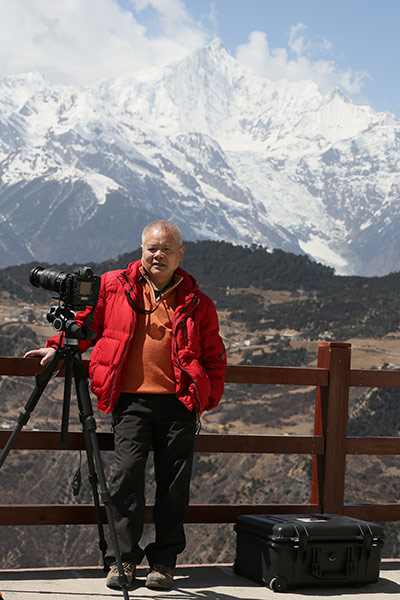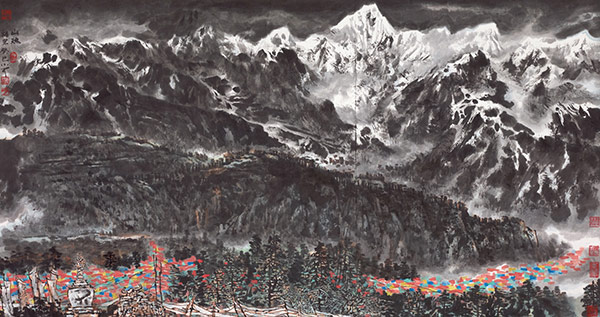

In Tibetan areas, Li Xiaoke felt relief from the pressure of coming from a prominent family. While he painted, he found it sacred and empowering, like a sort of pilgrimage, equally "tough and simple", he said.
Wang says Li Xiaoke's Xizang works capture the magnificence of the mountains and waters there, and the simplicity and physical strength of local people, adding that his paintings inspire an awe in the heart and mind of the viewer.
The exhibition also shows other iconic works by Li Xiaoke, including Huangshan Mountain, a monochromatic landscape painted before his death.
Li Xiaoke traveled to Huangshan, a renowned mountain in China, several times with his father, and observed him sketching at the site.
In this last work of his, Li Xiaoke showed a mastery of one of the basic techniques of classical Chinese painting, to delimit the outlines of subjects while capturing the spirit of nature and the universe, using no other hues but the color of ink.
"Looking at his paintings, we seem to see him walking in cold woods and deep mountains, or on the plateau; we seem to hear him praying to the deities, talking to himself, and chatting with friends," Wu says.
"Underlying the chill, refreshing scenery of snow, we feel his burning enthusiasm."
